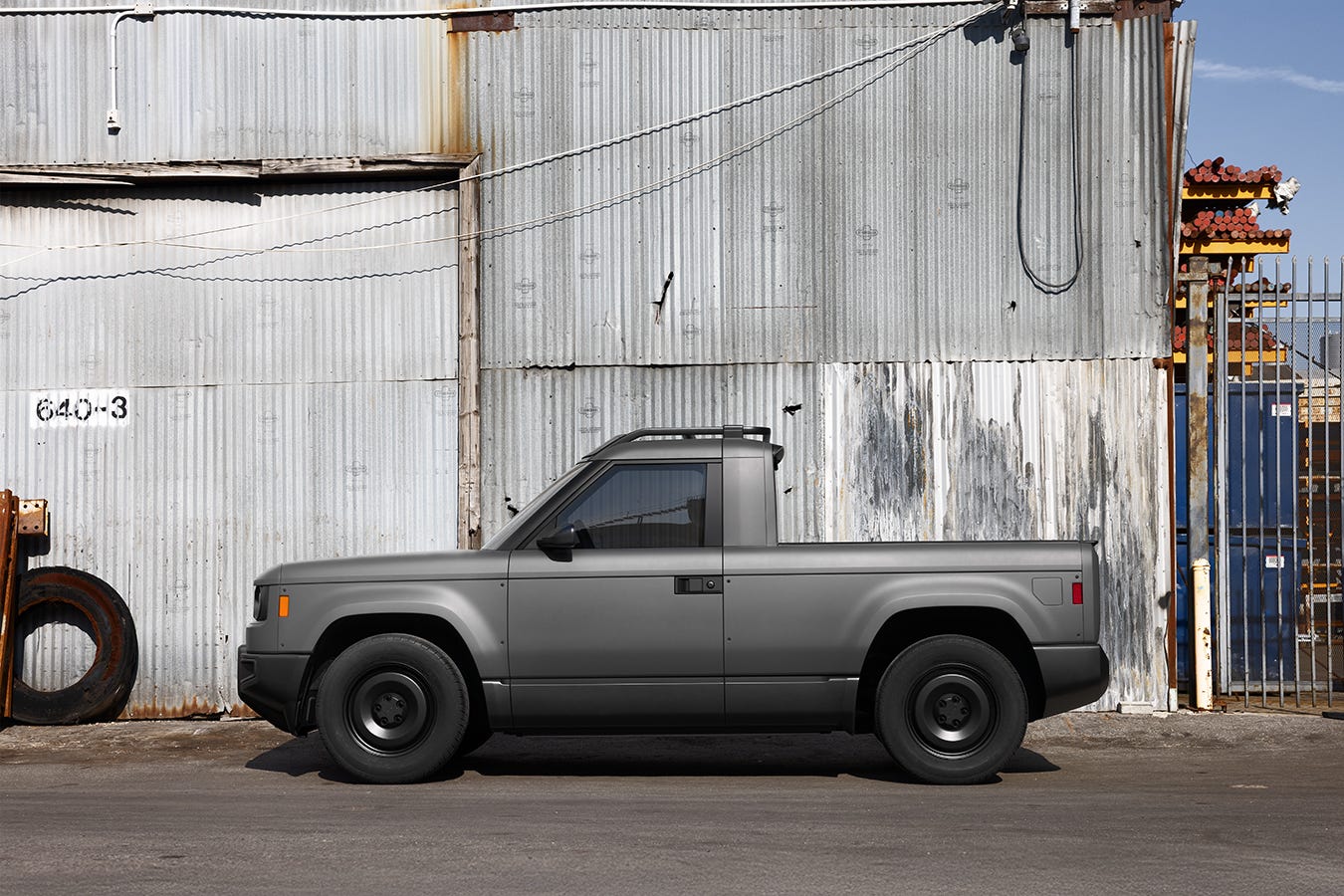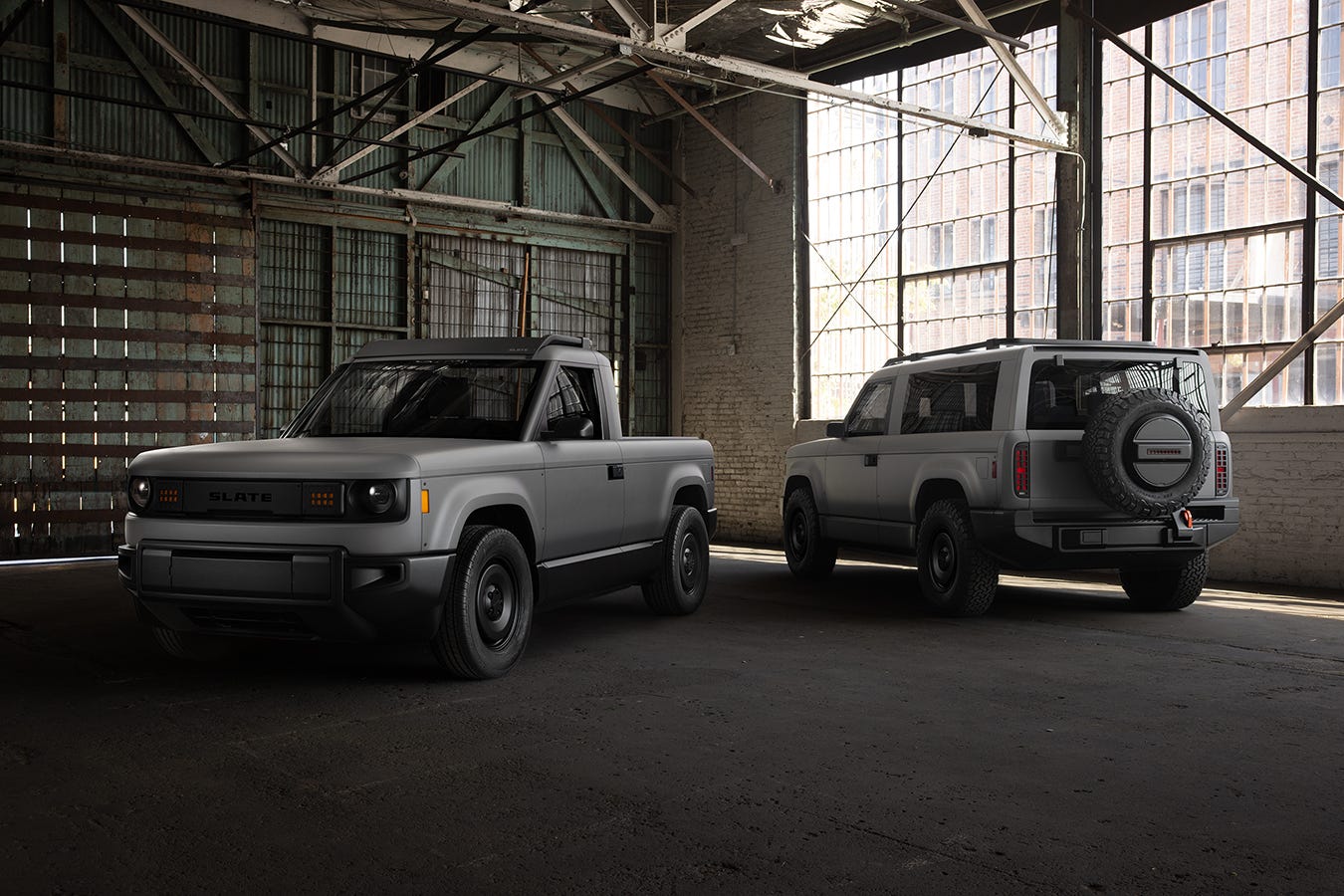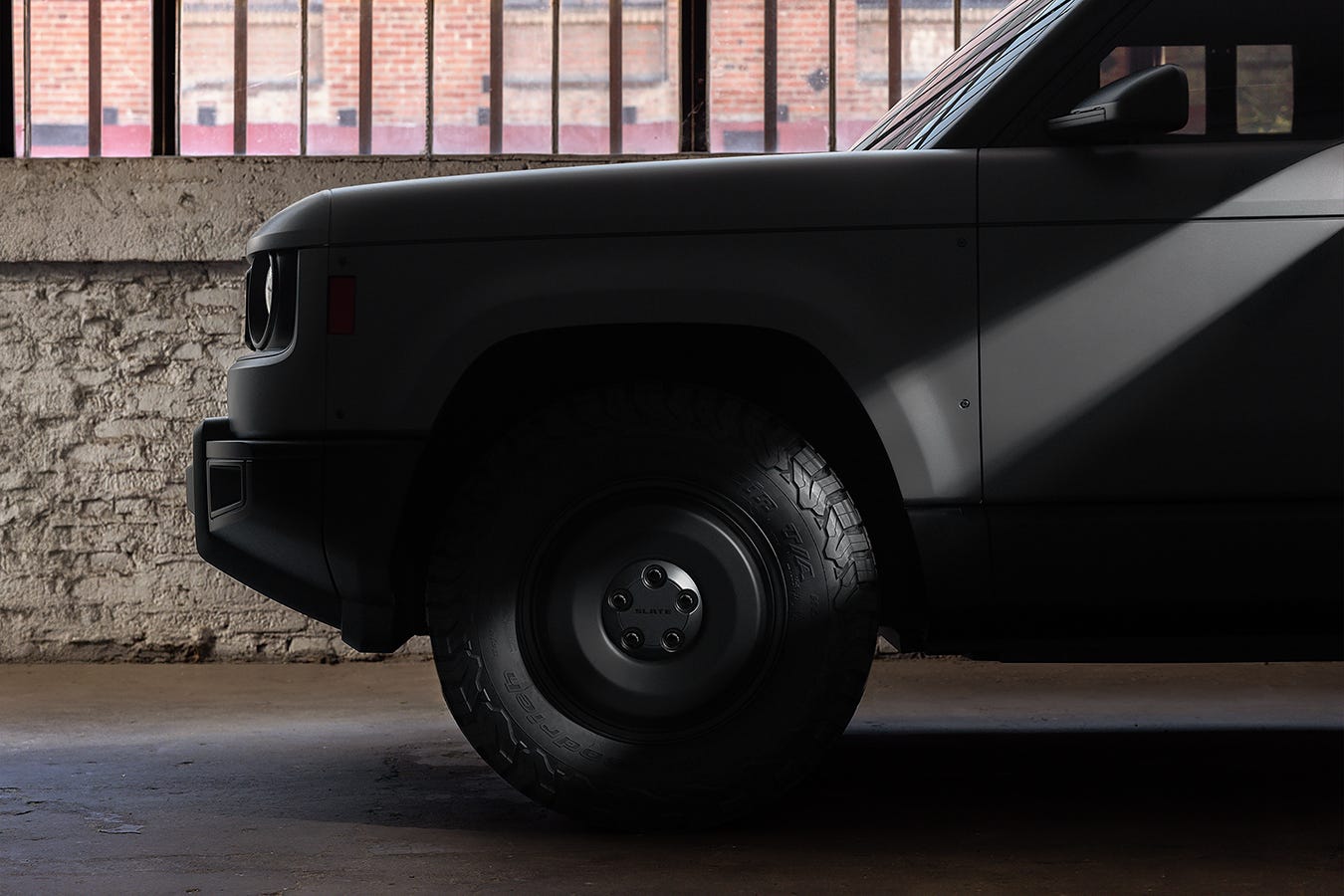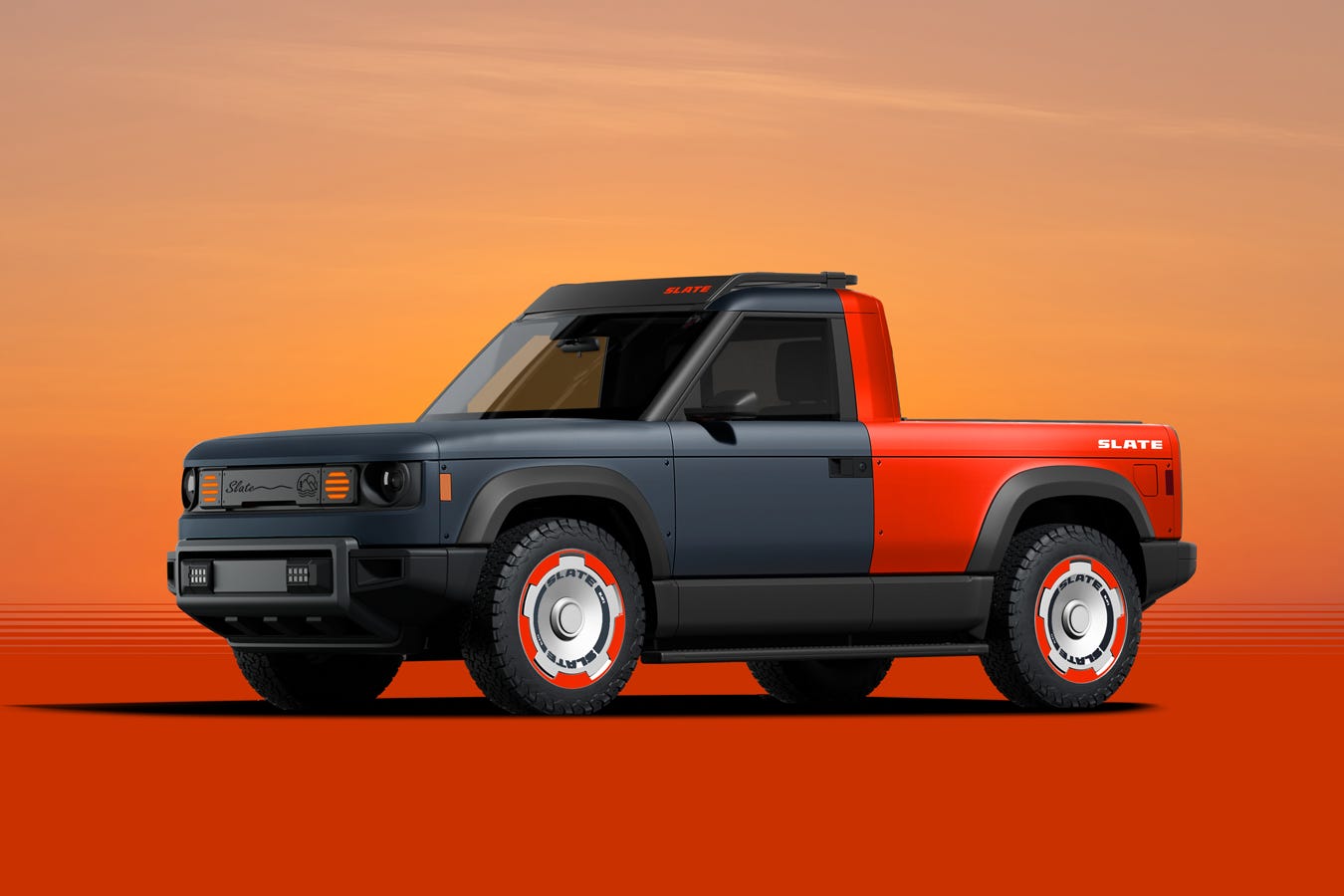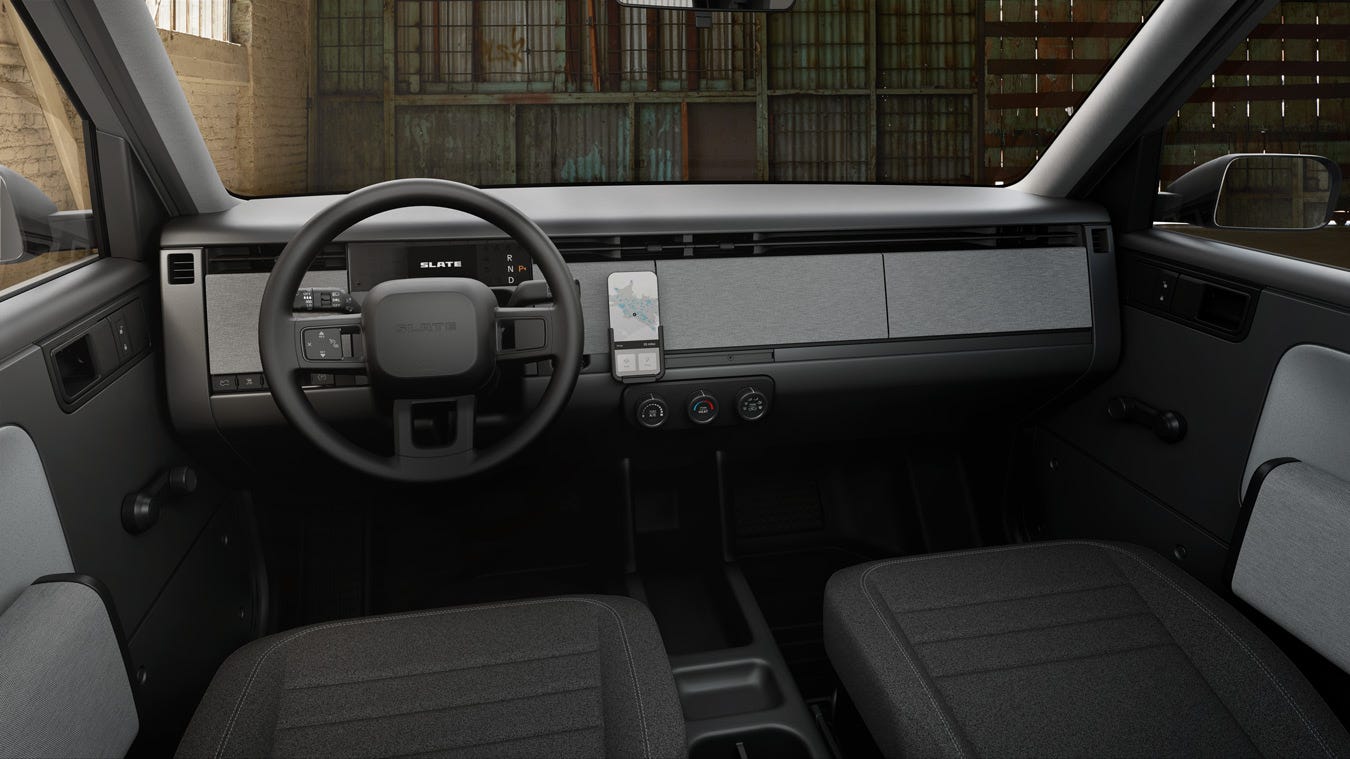Slate is the American truck scene's Ctrl+Alt+Del moment
Why I'm bullish on this ultra-low-cost EV.
If you missed the news last night or any of the remarkably well-reported leaks from TechCrunch leading up to last night, there's a new EV company in town. It's called Slate, its first product is called the Slate Truck, and the almost flagrant simplicity of that naming should give you a clue as to what's going on here.
If you want the full rundown on the company, I'd suggest heading over to The Verge, where I have an in-depth feature covering everything you need to know, including interviews with executives and details about exactly how the company hopes to bring such an aggressively priced product to market.
This piece is free, but I’m going premium for future analysis pieces like this. Please consider subscribing!How aggressively? Slate plans to sell its Truck for under $20,000 after EV incentives, which would reasonably place its MSRP at around $27,499 given the thing will be built in the U.S. and hopefully will qualify for the full $7,500 rebate.
As to whether that rebate will still be in existence when Slate’s Truck enters production in Q4 of next year… well, you can speculate on that just as well as I can.
Even if that falls, I'm still optimistic about Slate's chances for a few reasons, and speaking with the company's executives just made me more-so. Here's why.
Rebooting American motoring
American roads today are full of big, bloated, over-contented machines that are amazing to drive but far too expensive to own and, in many cases, dangerous to operate.
That's particularly true when it comes to trucks. The average price of a new truck in the U.S. is $60,000. That's wild for what's supposed to be the most egalitarian form of transportation.
If you've read any of my reviews of full-sized trucks lately, you'll have read me decrying their unnecessarily macho shapes and patently dangerous dimensions. When you can't see a sixth grader standing in front of your rig because the nose is too high, and when there's no functional reason for that nose to be that high in the first place, it's time for a change.
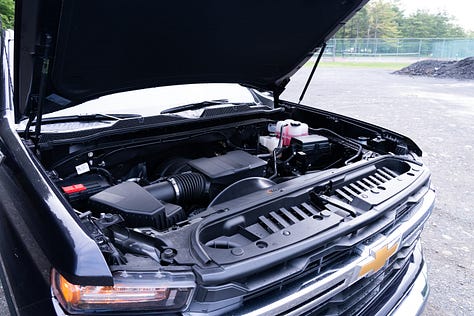
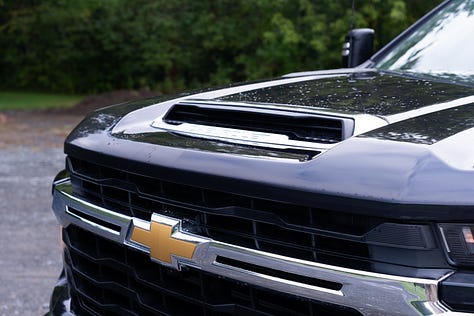
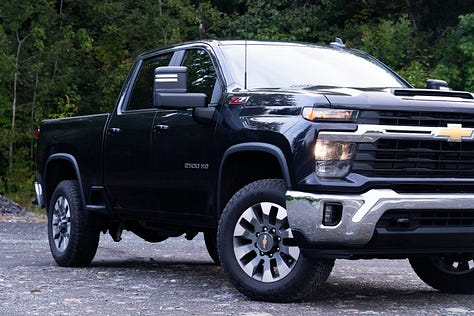
(Seriously, look at the picture above of the engine bay of a Silverado 2500. The engine sits a good six inches below the hood, which is itself far thicker than it needs to be, thanks to a giant fake air scoop. It's all there to pump up the ego of the person behind the wheel.)
The Slate Truck is the change the American truck scene needs. It's small, it's (relatively) lightweight (3,602 lbs), and yet it offers all the cargo (a bed that measures 50 by 60 inches), payload (1,433 pounds), and towing (1,000 pounds) capability that your average truck owner needs.
And yes, I know it's not going to haul your fifth wheel Up North every weekend. If that's you, enjoy your Super Duty, but I see a lot of F-350s every day, and 99 percent of them are driven by lone dudes on a lazy commute who spend more time picking their noses than hauling anything of substance.
Low operating costs
Electric cars are far simpler than traditional internal-combustion machines, with just a tiny fraction of the moving parts required. This fact has lulled many an aggressive founder into very dark places over the years, resulting in a cratered landscape from the spectacular failures of their companies.
Despite the relative simplicity of an EV, designing, developing, and manufacturing a modern car of any sort is hugely expensive. Slate has cut some massive corners to simplify that.
Plastic body panels means no expensive paint shop or stamping machines. A single model means simpler manufacturing. No infotainment means far lower demands for software engineering. No dealers means all the profits for cars and accessories go straight back to home base.
I could go on, but it's safe to say Slate was clearly designed to avoid the pitfalls that have consumed all those bright-looking EV startups of the past. This won't make it a more appealing car for the masses, in fact, quite the contrary in some cases, but it should make for a company with a far greater chance of success than most other EV startups.
No bait-and-switch
That focus on low-cost enables Slate to skip a common trope in EV startups: Profit maximization when a new model drops. There are years and millions of dollars worth of R&D to pay off by the time the production line starts firing, and the quickest way to rake in the cash is to absolutely pile on every option you possibly can. More options mean higher profit margins.
Thus, the prevalence of "Founders Editions" or the like, first-access models loaded to the gills and burdened with high MSRPs to match. The idea is that, eventually, once the accountants give the thumbs up, manufacturers can start to strip off some of those options packages and the rest of us can buy lesser-equipped, lower-priced cars.
Slate is turning that on its head. They're only going to manufacture a single model in a single trim that doesn't even have a stereo. Everything that isn't needed to make the thing drive well and safely will be an option, and most options will be installed by you (or a certified partner) after you get the Truck.
And, again, since there’s no dealer network, Slate doesn’t have to share the proceeds.
Reasons for concern
Like I said, I'm bullish, but there are a few reasons to be skeptical here, and the biggest question on my mind is whether American consumers are ready for that reboot.
It's not going to be easy. Too many buyers have been lulled into spending too much on cars that are, well, too much. Too many consumers have been convinced that a 68-month car loan (the nation's current average) is normal. Will they be willing to step away from a modern SUV's luxurious styling and proportions for something simple and affordable like this?
I'm optimistic, but I'm not sure. I can't tell you the number of people who've told me that Ford should make a truck the size of a '90s Ranger and that they should make it electric. Well, Ford clearly isn't ready, but Slate nearly is.
Are you?




